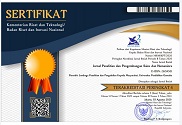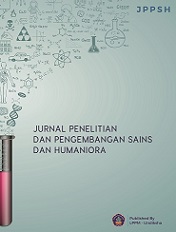Office Automation: Tools for Alleciating Maual Task and Errors in Document Handling in Federal University of Agriculture, Abeokuta, Ogun State, Nigeria
DOI:
https://doi.org/10.23887/jppsh.v8i3.87088Keywords:
Office Automation, Office Manager, Alleviate, DocumentAbstract
The issue of manual workload and errors in document management by office managers in an organization heavily relies on the availability of office automation tools as well as the necessary skills and competencies required to use them. This study aims to examine the use of office automation as a tool for reducing manual tasks and errors in document management among office managers at the Federal University of Agriculture, Abeokuta, Ogun State, Nigeria. The study employed a survey design with a population consisting of 100 office managers (secretaries) within the research area. The research instrument was a self-developed and validated questionnaire used to collect relevant data. The collected data were processed using the Statistical Package for Social Sciences (SPSS). Weighted mean and standard deviation were applied to answer the research questions, using an index score of 2.5 as the agreement threshold. The findings revealed that office automation tools are utilized by office managers to alleviate manual tasks and errors in document management. Office automation has a positive impact on reducing manual workload and errors, although office managers face various challenges in its utilization. Based on these findings, it is recommended that prospective office managers undergo adequate training and skills development to ensure effective adoption and utilization of office automation tools. Additionally, business organizations are advised to procure and provide office automation tools to enhance the productivity of their office managers.
References
Acemoglu, D., & Restrepo, P. (2019). Automation and new tasks: How technology displaces and reinstates labor. Journal of Economic Perspectives, 33(2), 3–30. https://doi.org/10.1257/jep.33.2.3.
Azi, S., & Lamle, M. B. (2015). Assessment of factors affecting job performance of secretaries. Journal of Professional Secretaries and Office Administrators, 23(1), 110–129. https://doi.org/10.69984/jopsoa.v23i1.19.
Chinthamu, N., & Karukuri, M. (2023). Data science and applications. Journal of Data Science and Intelligent Systems, 1(2), 83–91. https://doi.org/10.47852/bonviewJDSIS3202837.
Donthu, N., & Gustafsson, A. (2020). Effects of COVID-19 on business and research. Journal of Business Research, 117, 284–289. https://doi.org/10.1016/j.jbusres.2020.06.008.
Dosunmu, M. M., Bukki, A. O., & Akintola, O. A. (2018). Influence of Office Automation on Secretarial Administrators Effectiveness in Ogun State-Owned Universities. NIU Journal of Social Sciences, 4(3), 57–64. https://ijhumas.com/ojs/index.php/niujoss/article/view/363.
Dunmade, E. O., Ajayi, M. A., & Oladejo, D. A. (2022). Office Automation And Its Impact On Service Delivery In The Kogi State Civil Service. Bahria University Journal Of Management & Technology, 5(2). https://doi.org/10.62533/bjmt.v5i2.49.
Elegunde, A. F., & Osagıe, R. (2020). Artificial intelligence adoption and employee performance in the Nigerian banking industry. International Journal of Management and Administration, 4(8), 189–205. https://doi.org/10.29064/ijma.734734.
Etampawala, E. R., Uluwita, Y. R., Jayasinghe, J. M. W. C., Abesekara, A. W. A. D. C., Amarasena, N., & Wellalage, S. (2022). OAS: An advanced undergraduate office automated system for automate bank work routing. International Journal Of Engineering And Management Research, 12(6), 110–116. https://doi.org/10.31033/ijemr.12.6.15.
Friday, E. C., Onah, F. S., Onwudinjor, E. C., & Ezenwoke, M. L. (2024). Office Automation and Performance of Small and Medium Scale Enterprises in Anambra State, Nigeria. Journal of Public Administration, Policy and Governance Research, 2(4), 156–173. https://jpapgr.com/index.php/research/article/view/151.
Gattullo, M., Uva, A. E., Fiorentino, M., Scurati, G. W., & Ferrise, F. (2017). From paper manual to AR manual: do we still need text? Procedia Manufacturing, 11, 1303–1310. https://doi.org/10.1016/j.promfg.2017.07.258.
Huang, X., Yan, W., Cao, H., Chen, S., Tao, G., & Zhang, J. (2024). Prospects for purely electric construction machinery: Mechanical components, control strategies and typical machines. Automation in Construction, 164, 105477. https://doi.org/10.1016/j.autcon.2024.105477.
Inyang, U. A. (2022). Professional Ethics in Secretarial Practice and the Level of Job Performance of Secretaries. Open Access Repository, 9(2), 45–57. https://doi.org/10.17605/OSF.IO/KPQ69.
Javed, M. A., Alam, M., Alam, M. A., Islam, R., & Ahsan, M. N. (2024). Design and Implementation of Enterprise Office Automation System Based on Web Service Framework & Data Mining Techniques. Journal of Data Analysis and Information Processing, 12(4), 523–543. https://doi.org/10.4236/jdaip.2024.124028.
Kaminska, A. (2019). Don’t copy that: Security printing and the making of high-tech paper. Convergence, 25(4), 590–606. https://doi.org/10.1177/1354856519845748.
Lacity, M. C., & Willcocks, L. P. (2016). A new approach to automating services. MIT Sloan Management Review, 58(1), 41–49. https://doi.org/10.7551/mitpress/11633.003.0015.
Lee, J. S., Ham, Y., Park, H., & Kim, J. (2022). Challenges, tasks, and opportunities in teleoperation of excavator toward human-in-the-loop construction automation. Automation in Construction, 135, 104119. https://doi.org/10.1016/j.autcon.2021.104119.
Lesi, O. B. (2020). Office automation and secretarial productivity in Rivers State University. American International Journal of Nursing Education and Practice, 1(1), 22–34. http://acseusa.org/journal/index.php/aijnep/article/view/68.
Leyer, M., & Schneider, S. (2021). Decision augmentation and automation with artificial intelligence: Threat or opportunity for managers? Business Horizons, 64(5), 711–724. https://doi.org/10.1016/j.bushor.2021.02.026.
Mason, S. (2018). Documents signed or executed with electronic signatures in English law. Computer Law & Security Review, 34(4), 933–945. https://doi.org/10.1016/j.clsr.2018.05.023.
Olufemi, F. (2020). Influence of work automation on the performance of nigerian ports. Journal of Management and Science, 10(3), 12–24. https://doi.org/10.26524/jms.10.3.
Oteng, P. A., & Seidu, P. A. (2016). The Impact of Modern Office Technology on the Secretary’s Performance in Some Selected Business Organizations in the Takoradi Metropolis. ADRRI Journal of Arts And Social Sciences, 13(12), 1–9. https://doi.org/10.55058/adrrijass.v13i12.258.
Ozomenam, N. P., & Asogwa, S. O. (2023). Secretarys’ competencies coverge as hubs for optimum performance in contemporary offices. Journal of Professional Secretaries and Office Administrators, 30(1), 88–97. https://doi.org/10.69984/jopsoa.v30i1.112.
Parker, S. K., & Grote, G. (2022). Automation, algorithms, and beyond: Why work design matters more than ever in a digital world. Applied Psychology, 71(4), 1171–1204. https://doi.org/10.1111/apps.12241.
Raisch, S., & Krakowski, S. (2021). Artificial intelligence and management: The automation–augmentation paradox. Academy of Management Review, 46(1), 192–210. https://doi.org/10.5465/amr.2018.0072.
Rogers, L. K. (2022). Is role change enough? District organizational supports for principal supervision. Educational Administration Quarterly, 58(4), 527–560. https://doi.org/10.1177/0013161X221081828.
Shestakofsky, B. (2017). Working algorithms: Software automation and the future of work. Work and Occupations, 44(4), 376–423. https://doi.org/10.1177/0730888417726119.
Spring, M., Faulconbridge, J., & Sarwar, A. (2022). How information technology automates and augments processes: Insights from Artificial-Intelligence-based systems in professional service operations. Journal of Operations Management, 68(6–7), 592–618. https://doi.org/10.1002/joom.1215.
Sulaiman, A., Omar, K., & Nasrudin, M. F. (2019). Degraded historical document binarization: A review on issues, challenges, techniques, and future directions. Journal of Imaging, 5(4), 48. https://doi.org/10.3390/jimaging5040048.
Yadin, D., Calil, S., Pallikarakis, N., Poluta, M., Bergamasco, S., Clark, D., & Morse, W. (2021). Is Clinical Engineering an occupation or profession? Global Clinical Engineering Journal, 4(2), 26–35. https://doi.org/10.31354/globalce.v4i2.131.
Zhang, X. (2023). Exploring the Application of PLC Technology in Mechanical Electrical Control Devices. Academic Journal of Management and Social Sciences, 2(3), 94–99. https://doi.org/10.54097/ajmss.v2i3.8744.
Downloads
Published
Issue
Section
License
Copyright (c) 2024 Boladale Ruth Oluwasina, Adeola Idiat Adepoju, Rasidat Iyabo Olore

This work is licensed under a Creative Commons Attribution-ShareAlike 4.0 International License.
Authors who publish with the Jurnal Penelitian dan Pengembangan Sains dan Humaniora agree to the following terms:
- Authors retain copyright and grant the journal the right of first publication with the work simultaneously licensed under a Creative Commons Attribution License (CC BY-SA 4.0) that allows others to share the work with an acknowledgment of the work's authorship and initial publication in this journal.
- Authors are able to enter into separate, additional contractual arrangements for the non-exclusive distribution of the journal's published version of the work (e.g., post it to an institutional repository or publish it in a book), with an acknowledgment of its initial publication in this journal.
- Authors are permitted and encouraged to post their work online (e.g., in institutional repositories or on their website) prior to and during the submission process, as it can lead to productive exchanges, as well as earlier and greater citation of published work. (See The Effect of Open Access)









